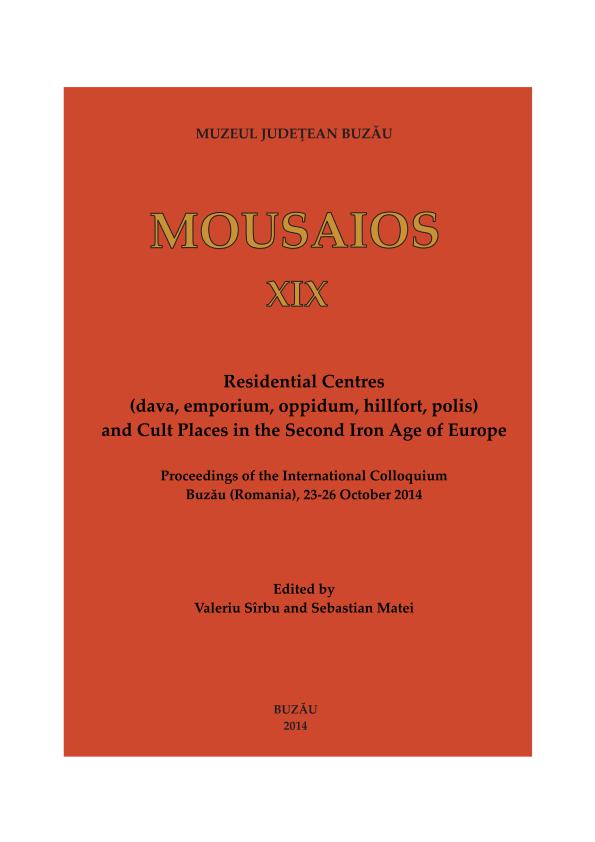THE GETO-DACIAN CULT PLACE FROM PIETROASA MICĂ – GRUIU DĂRII, BUZĂU COUNTY (ROMANIA)
THE GETO-DACIAN CULT PLACE FROM PIETROASA MICĂ – GRUIU DĂRII, BUZĂU COUNTY (ROMANIA)
Author(s): Maria-Magdalena Ştefan, Valeriu Sîrbu, Dan Ştefan, Sebastian MateiSubject(s): Archaeology
Published by: Muzeul Judetean Buzău
Keywords: Geto-Dacians; cult place; inventory; rituals; Second Iron Age
Summary/Abstract: The finds from the Geto-Dacian era show a particular development dynamic of the Gruiu Dării site, both on the plateau and on the southern terrace. On the Plateau, at the end of the 4th c. – 3rd. c. BC period and in the second half of the 2nd c. – beginning of 1st c. BC period, there was an unfortified settlement, in the 1st c. BC there was a fortress, while in the 1st c. AD there was a major cult site. From the 1st c. AD, there are no finds of surface dwellings or huts, of workshops, pits or other household complexes that would show the site being used as an inhabitation area. In fact, the mound deposits and the fireplaces were spread out over the entire surface researched in the enclosure and the southern terrace so, in reality, there was no room left for having such complexes. The transition from fortress to sacred site happened sometimes at the threshold between the two centuries, most likely at the beginning of the 1st c. AD, a development clearly visible in the stratigraphy of the enclosure. The inventory found includes a large variety of items, some of them deposited whole, generally already used, others fragmentary, such as pottery, tools and utensils, adornments and clothing accessories, weapons and harness items, coins and anthropomorphic or zoomorphic figurines. These deposits contained the burnt remains of dwellings and some of their inventory, but these went through some sort of selection, because there is a notable absence or an extreme rarity of some categories of items (e.g. metal farming implements, stones for wood or stone processing) and an abundance of others, such as metal knives, spindle-whorls and ceramic discs, fibulae, beads, arrowheads, spurs and bridle-bits. What is also notable is the importance of the fire in the rituals performed here, as made clear by the many fireplaces found in situ or by those destroyed and put inside the stone rings. The fact that it was fortified with a wall made of limestone blocks and that it had a rich and diverse range of items in the “little mounds” means, also in the Terrace 1, beyond doubt, that Gruiu Dării was a major Geto-Dacian cult site. For the time being, it remains unusual, both due to the type of built ritual structures and due to certain features of the inventory found in them.
Journal: Mousaios
- Issue Year: 2014
- Issue No: 19
- Page Range: 343-371
- Page Count: 18
- Language: English

